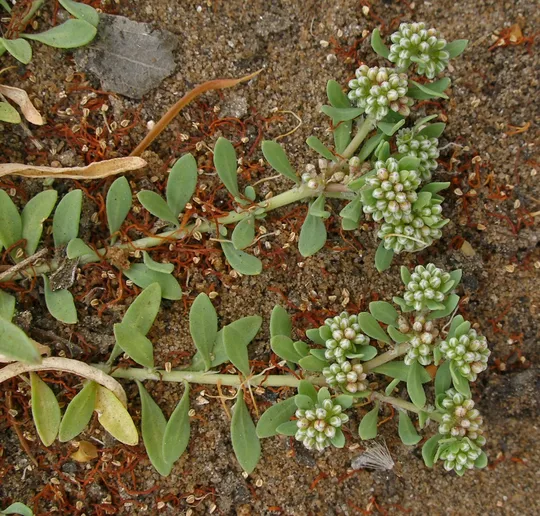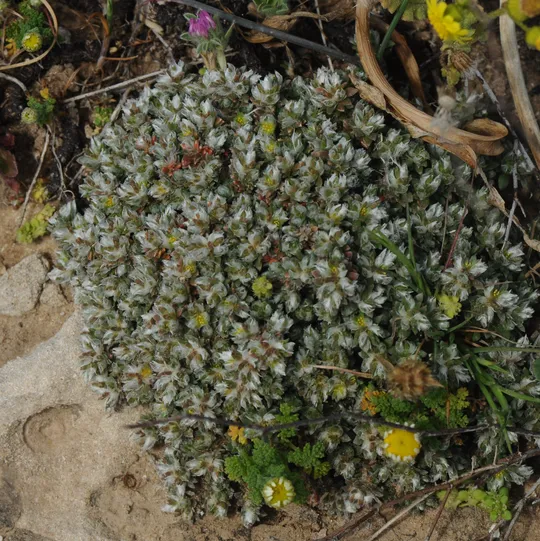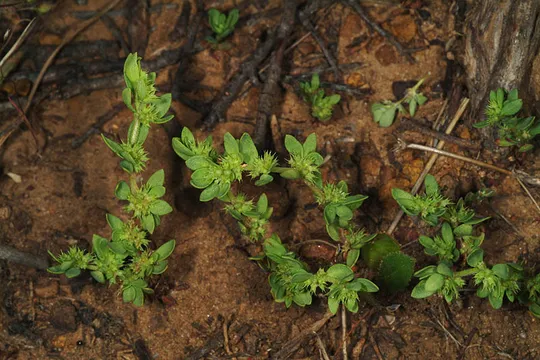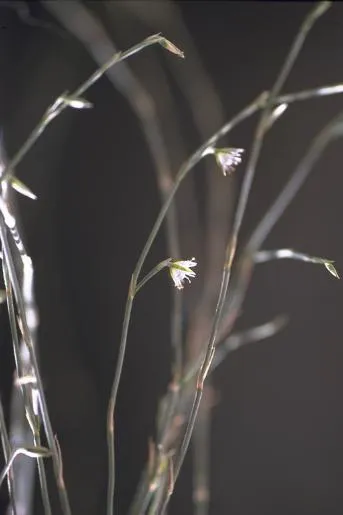Sand Strapwort, Coastal Strapwort
Corrigiola litoralis
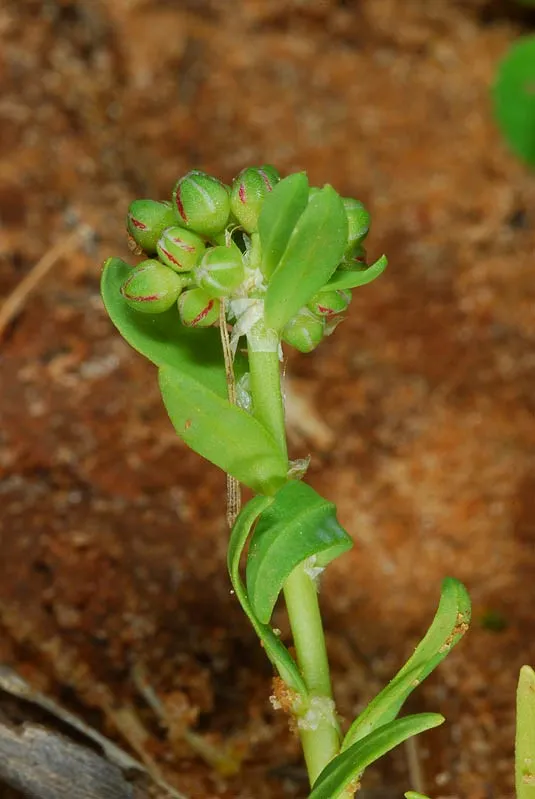
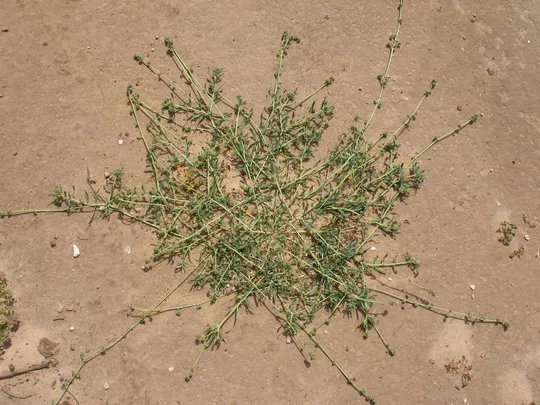
Corrigiola
litoralis grows in the Sharon and Philistian Plain, at twelve verified
sites, and according to estimates there are a total of 15 sites. The main
concentrations known today are located in the Sharon, in the Ramat HaSharon-HaKfar
HaYarok-Tsahala area. Most of the sites in this section were found only in
recent years: in the IMI compound (Ron Frumkin, 2008); in Tsahala-Giv'at HaShikmim
(Alon Singer, Gene Bank, 2009). In contrast, the species is extinct in the
Netanya and Herzliya sites, from where collections were made for the Hebrew
University Herbarium. In the Philistian Plain it has been observed in recent
years at several sites around Rehovot (Yatsits, Yashresh, and Sitria) and also
in Be’er Ya’akov, Nir Israel and Julis (Oz Golan). From the Philistian Plain sites
in Petah Tikva and Ramat Gan, from which plants were collected for the
Jerusalem Herbarium C. litoralis is also
extinct.
Fields of sand and sandy red loam (Hamra) flats, in dense
herbaceous vegetation.
For the genus
and for the relationship between Corrigiola litoralis and C. palaestina
– see the C. palaestina section above.
·
Corrigiola
litoralis grows today, as before, in two regions along the
coastal plain, but there has been changes in the number and location of known
sites. It disappeared from sites that were known previously, but has been
discovered on new sites. The discovery of new sites probably reflects increased
search efforts rather than an expansion of its range. The sites from which the
plant has become extinct are close to or inside large urban settlements in the
Sharon and Pleshet.
·
The populations of
C.
litoralis at each site characteristically number several dozen plants;
however, as the plant is of modest dimensions it can be hidden beneath the tall
herbaceous vegetation and be difficult to find.
·
Sandy red loam
habitats have disappeared from most of coastal plain due to agricultural and
urban development. The remaining habitats are threatened by current development
trends near urban settlements, where most of the sites are located.
·
C. litoralis
is not protected in a nature reserve.
·
Its global
distribution is broad, it is not in danger of extinction and does not appear in
red plant books.
The
IMI site should be marked as a specific conservation site for monitoring and
conservation of the Corrigiola litoralis population, as
well as of other endangered species unique to the sandy red loam habitats. Thorough
surveys of potential sandy red loam sites in the Sharon and Pleshet should be
organized to obtain updated information on all the populations in Israel.
Corrigiola
litoralis grows in most of the European countries bordering the
Mediterranean Sea, in the Mediterranean islands and in the neighboring
countries: Portugal, Spain, France, Corsica, Sardinia, Italy, Sicily, former
Yugoslavia, Albania, Greece, Crete, the Aegean Islands, Bulgaria and Turkey. In
the Middle East it is found in Syria, Lebanon, Jordan and Israel. In North
Africa it grows in Morocco, Algeria and Tunisia, but is not known from Libya
and Egypt. There is also documentation regarding its presence in several
African countries: Ethiopia, Eritrea, Kenya and South Africa. It appears in
several states in the United States as an alien species.
Corrigiola
litoralis is an annual grass of sandy red loam fields in the
Sharon and Pleshet, which grows on a small number of sites, and is extinct from
previously known sites near urban settlements. It grows in vulnerable areas. It
is not protected in nature reserves in Israel, but is not globally endangered.
Current Occupancy Map
| 1000 squre meter pixel | 5000 squre meter pixel | 10000 squre meter pixel | |
|---|---|---|---|
| number of observations | 0 | 0 | 0 |
| in total pixels | 0 | 0 | 0 |
| Family | Caryophyllaceae |
| Classification | On the endangered species list |
| Ecosystem | Mediterranean |
| Chorotype | Mediterranean (Euro – Siberian – Sudanian) |
| Conservation Site | IMI Site in Ramat HaSharon |
| Rarity |
1
3
6
|
|---|---|
| Vulnerability |
0
3
4
|
| Attractiveness |
0
0
4
|
| Endemism |
0
0
4
|
| Red number |
1
3.7
10
|
| Peripherality | W |
| IUCN category | DD EW EX LC CR EN VU NT |
| Threat Definition according to the red book | Vulnerable |
 Based on:
Based on:
